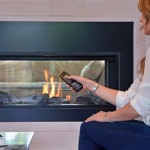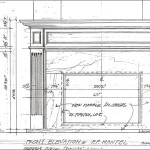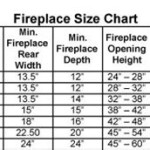How To Build A Real Stone Fireplace
Constructing a real stone fireplace is a significant undertaking, requiring careful planning, meticulous execution, and a thorough understanding of masonry techniques and building codes. A well-built stone fireplace not only provides warmth and ambiance but also adds considerable value and aesthetic appeal to a home. This article outlines the essential steps involved in building a real stone fireplace, from initial design to final finishing.
Planning and Preparation: Laying the Foundation for Success
The initial phase of building a stone fireplace is arguably the most critical. It involves thorough planning, which encompasses design considerations, material selection, and ensuring adherence to all relevant building codes and safety regulations. Neglecting these foundational aspects can lead to structural instability, code violations, and ultimately, a potentially hazardous fireplace.
First, determine the desired location and size of the fireplace. Consider the existing architecture of the home and how the fireplace will integrate into the overall design. Think about the scale of the room and choose a fireplace size that is proportionate. A fireplace that is too large can overwhelm a small space, while one that is too small may fail to make a significant visual impact in a larger room.
Next, develop a detailed design plan or blueprint. This plan should include precise measurements of the firebox, chimney, hearth, and any decorative elements. It should also specify the type of stone to be used, the mortar joint style, and the overall aesthetic of the fireplace. Consider consulting with an architect or a professional fireplace designer to ensure the design is structurally sound and aesthetically pleasing.
Before proceeding with construction, it is essential to obtain all necessary building permits. Local building codes vary significantly, and failure to comply can result in costly fines or even the need to dismantle the fireplace. Research local regulations regarding fireplace construction, including requirements for firebox size, chimney height and diameter, hearth dimensions, and clearances to combustible materials. Submitting a detailed plan to the local building department will ensure compliance and prevent potential problems down the line.
Material selection is another crucial aspect of the planning phase. Choose high-quality, durable stone that is suitable for fireplace construction. Consider the aesthetic properties of different types of stone, such as granite, limestone, sandstone, and fieldstone. Each type of stone has its unique characteristics in terms of color, texture, and durability. Select a stone that complements the style of the home and meets the specific requirements of the fireplace design. Order sufficient quantities of stone, mortar, firebrick, chimney liner, and other necessary materials to avoid delays during the construction process.
Finally, prepare the work area. This involves clearing the space where the fireplace will be built, protecting surrounding surfaces with drop cloths, and ensuring adequate ventilation. Gather all necessary tools and equipment, including a brick hammer, masonry chisel, level, square, mortar mixer, trowel, and safety glasses. Proper preparation will streamline the construction process and minimize the risk of accidents or damage.
Construction: Building the Fireplace Structure
Once the planning and preparatory steps are complete, the actual construction of the stone fireplace can begin. This phase requires careful attention to detail, precise masonry techniques, and a commitment to safety. The construction process typically involves building the foundation, firebox, chimney, and hearth.
Begin by constructing a solid foundation for the fireplace. The foundation must be strong enough to support the weight of the entire structure. Typically, a concrete slab is used as the foundation. The depth and dimensions of the foundation will depend on the size and weight of the fireplace and local soil conditions. Ensure the foundation is level and properly cured before proceeding with the construction of the fireplace.
Next, build the firebox, which is the heart of the fireplace. The firebox must be constructed of fire-resistant materials, typically firebrick, to withstand the high temperatures generated by burning wood. Lay the firebrick in a bed of refractory mortar, ensuring tight joints and a smooth, even surface. The dimensions of the firebox should be carefully calculated based on the desired size of the fire and the efficiency of the fireplace. Consider incorporating a smoke shelf to improve draft and prevent smoke from entering the room.
The chimney serves to vent smoke and combustion gases from the firebox. The chimney must be constructed of durable, fire-resistant materials, such as brick, stone, or a pre-fabricated chimney liner. The chimney should extend high enough above the roofline to ensure proper draft and prevent downdrafts. Install a chimney liner to protect the chimney from the corrosive effects of combustion gases and to improve draft. The chimney liner should be properly sized to match the firebox and the height of the chimney. Ensure the chimney is properly sealed to prevent water from entering the structure and causing damage.
The hearth is the non-combustible area in front of the firebox. The hearth protects the floor from sparks and embers and provides a safe space for tending the fire. The hearth must extend a minimum distance in front of the firebox and to the sides, as specified by local building codes. Construct the hearth of non-combustible materials, such as stone, brick, or tile. Ensure the hearth is level and properly supported.
With the foundation, firebox, chimney, and hearth in place, begin laying the stone veneer. Apply a layer of mortar to the back of each stone and carefully position it onto the fireplace structure. Use a level and square to ensure the stones are properly aligned and plumb. Experiment with different stone patterns and joint styles to achieve the desired aesthetic. Ensure the stones are securely bonded to the structure and that the mortar joints are properly filled. Clean excess mortar from the stone surfaces as you work to prevent staining.
Finishing and Safety: Ensuring a Functional and Safe Fireplace
The final phase of building a stone fireplace involves finishing the stone veneer, installing any decorative elements, and ensuring the fireplace is safe to use. This phase requires attention to detail and a commitment to quality craftsmanship. Proper finishing and safety checks will ensure the fireplace is both aesthetically pleasing and functionally sound.
Once the stone veneer has been laid and the mortar has fully cured, clean the stone surfaces thoroughly to remove any remaining mortar residue. Use a masonry brush and a mild detergent solution to scrub the stone surfaces. Rinse thoroughly with clean water and allow the stone to dry completely. Consider applying a stone sealant to protect the stone from staining and weathering.
Inspect the mortar joints carefully and touch up any areas where the mortar is cracked or missing. Use a pointing trowel to fill the joints with fresh mortar, ensuring a smooth, even surface. Allow the mortar to cure completely before using the fireplace.
Install any decorative elements, such as mantels, shelves, or stone carvings. Ensure these elements are securely attached to the fireplace structure. Consider using decorative stone accents to enhance the aesthetic appeal of the fireplace.
Before using the fireplace for the first time, conduct a thorough safety inspection. Check for any cracks or gaps in the firebox, chimney, or hearth. Ensure the chimney is properly cleaned and free of obstructions. Install a spark arrester on top of the chimney to prevent sparks from escaping and potentially causing a fire.
Test the fireplace by building a small fire and observing the draft. Ensure the smoke is properly vented through the chimney and that there are no signs of backdrafting. If the draft is poor, consult with a chimney professional to diagnose and resolve the problem. Consider installing a chimney damper to control the draft and prevent heat loss when the fireplace is not in use.
Finally, educate yourself and others on the safe operation of the fireplace. Never leave a fire unattended. Use only seasoned firewood. Keep combustible materials away from the fireplace. Install smoke detectors and carbon monoxide detectors in the home. Regularly inspect and maintain the fireplace to ensure it remains safe and functional for years to come.

How To Build An Outdoor Stacked Stone Fireplace

Tips On How To Build A Stone Fireplace Horizon

Living Stone Masonry Stonetutorials

Creating A Stone Fireplace Modeling Blender Artists Community

How To Build A River Rock Fireplace Stone S Natural Fireplaces Rustic

How To Build And Hang A Mantel On Stone Fireplace Shanty 2 Chic

Thin Stone Veneers Make A Fireplace Update Easy Swenson Granite 100 Natural Stones

How To Build A Stone Fireplace Full

Build A Stone Fireplace Resources To Help You Stack It Up Outdoors

Diy Fireplace Stone Surround Natural Hearth Installation
Related Posts








